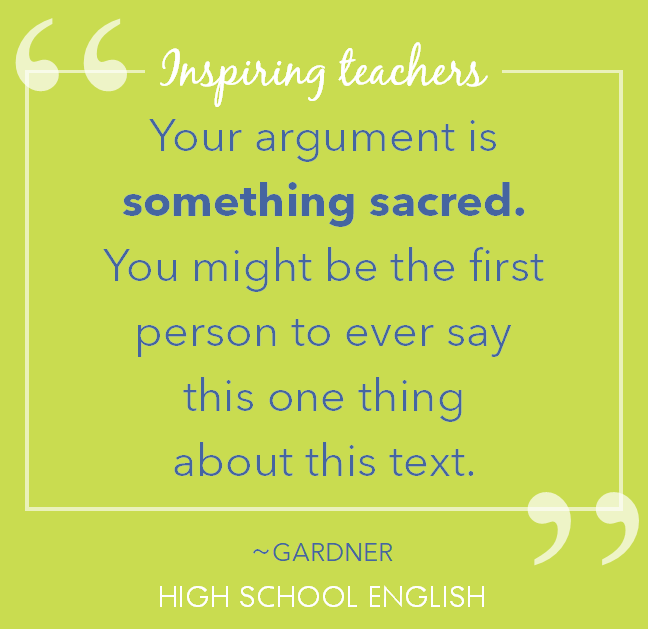Hyla Stories
Heroes, Venn Diagrams and Academic Accountability

9th Grade English Class:
“To examine the Hero’s Journey, I chose a book that’s as resistant as possible to analyzing that framework,” Gardner explains. “The House on Mango Street is not a traditional hero’s journey – it’s really more a series of vignettes. And while it’s not an unusual book to read in high school English, we are taking an usual approach to it. I wanted to see what students could extract from the text. And they’re loving it.”
Alongside the individual journey of the main character, students discover the hero’s journey as a universal structure in human storytelling – and then challenge it. Questioning Joseph Campbell’s monomyth framework, “students start to ask if the hero’s journey is truly a foundational part of storytelling,” Gardner explains, “or something we project and perpetuate.” More than reading, Gardner encourages students to “really interrogate the text to see if Campbell’s claim is true.”
Their writing assignment requires further interrogation. “I present them with a Venn diagram as a way to get them to write about what they really care about.” On the whiteboard Gardner draws three circles: one for the main character’s life, one for the hero’s journey, and one for a major social issue in the book, inviting students to choose one they want to tackle. He points to the center and tells students, “that’s your argument.” Gardner explains that asking students to prove an argument of their choosing requires “a higher responsibility as a scholar, a higher accountability, because I’m not just setting up a question with only two possible answers and asking them to pick a side.”
Equipped with freedom to choose, new database research skills taught by guest lecture librarians from Kitsap Public Library, and a topic “that really grabs them,” students begin to write. They develop an argument that both presents textual evidence (specific examples of where those social issues surface in the book), while also integrating their research to show the broader context within which the story unfolds. Handed agency, students know they are being given a chance to “identify something unique to them and then say something about that.” Gardner’s enthusiasm for student voice is inspiration itself: “the stakes are so much higher when it’s on you, but it’s also so much more exciting as a writer. Your argument is something sacred. You might be the first person to ever say this one thing about this text.”

